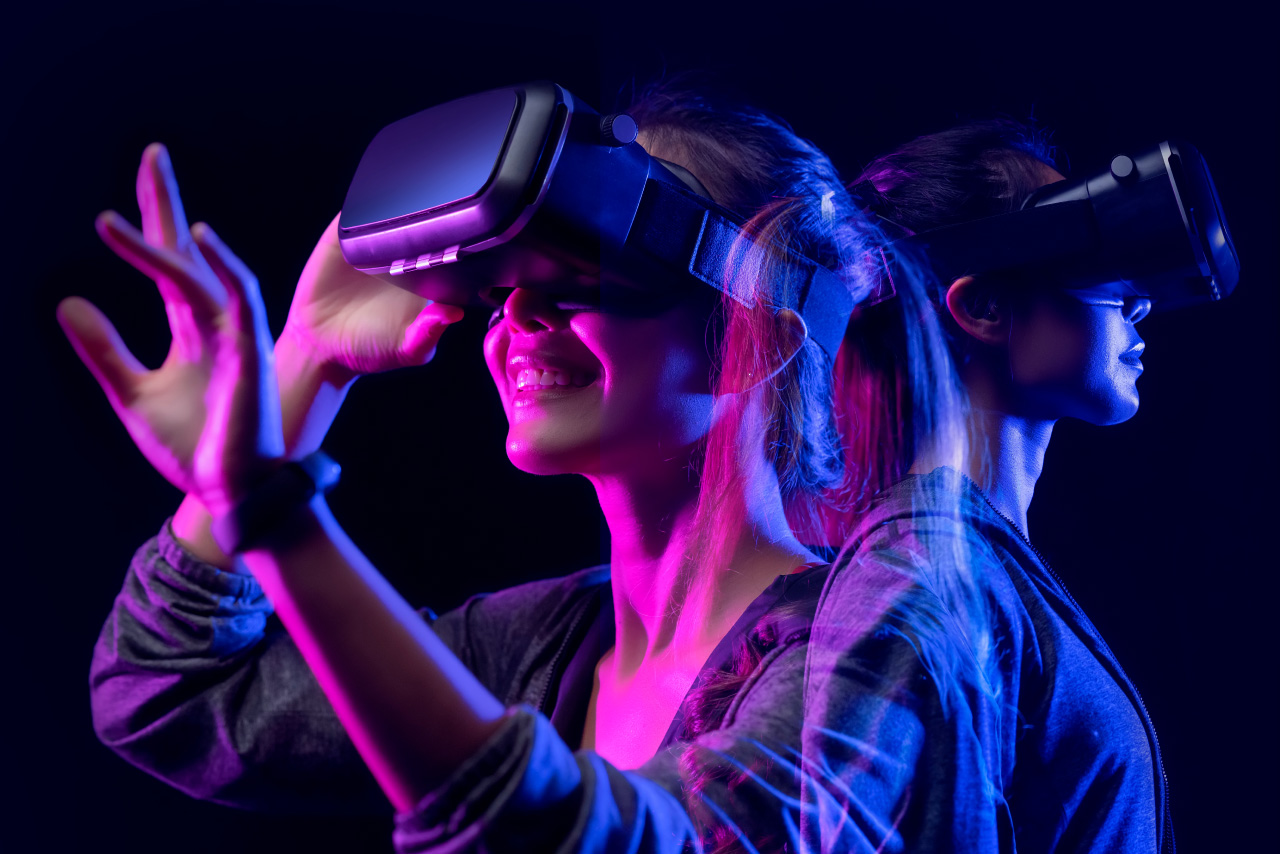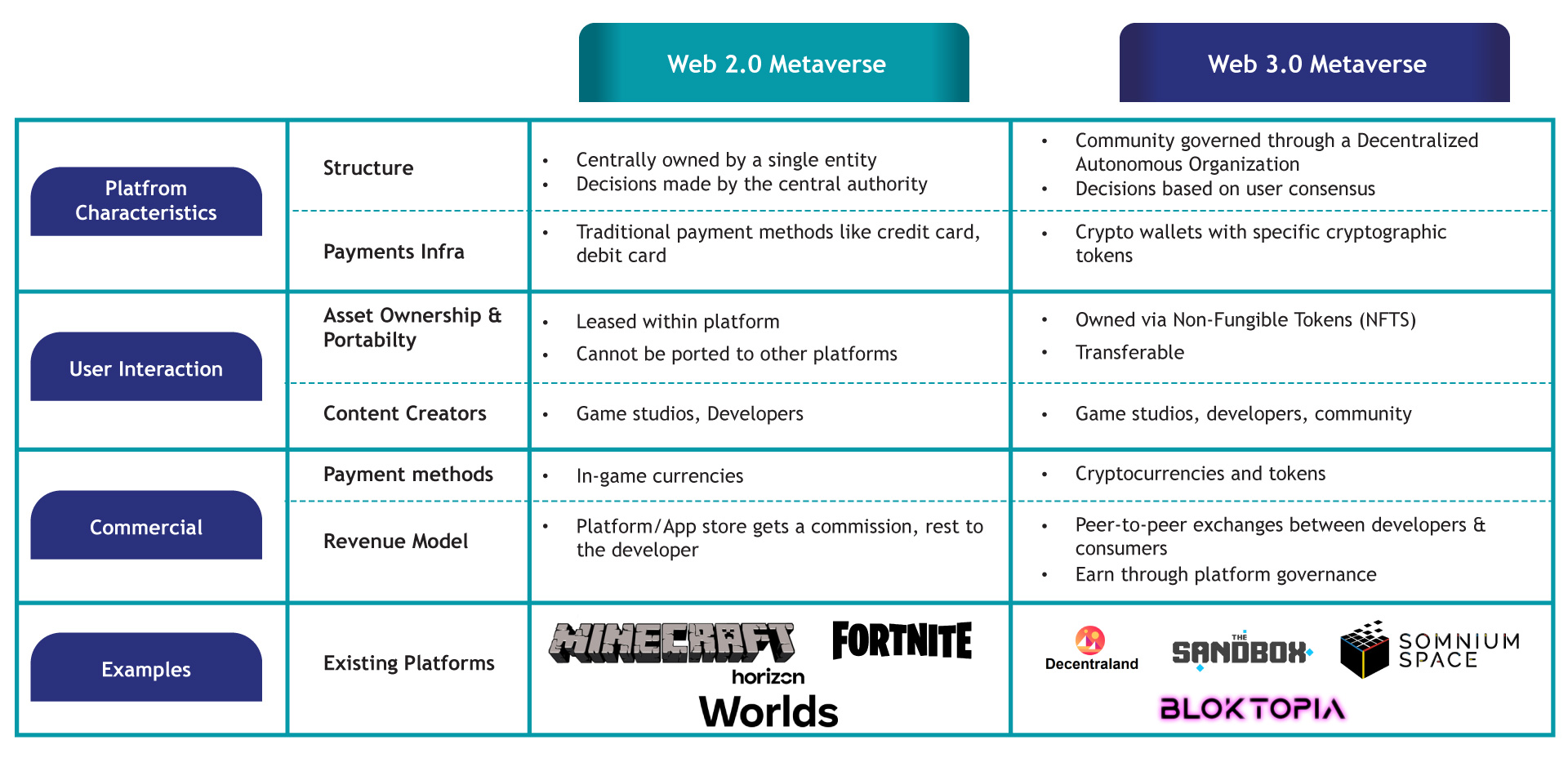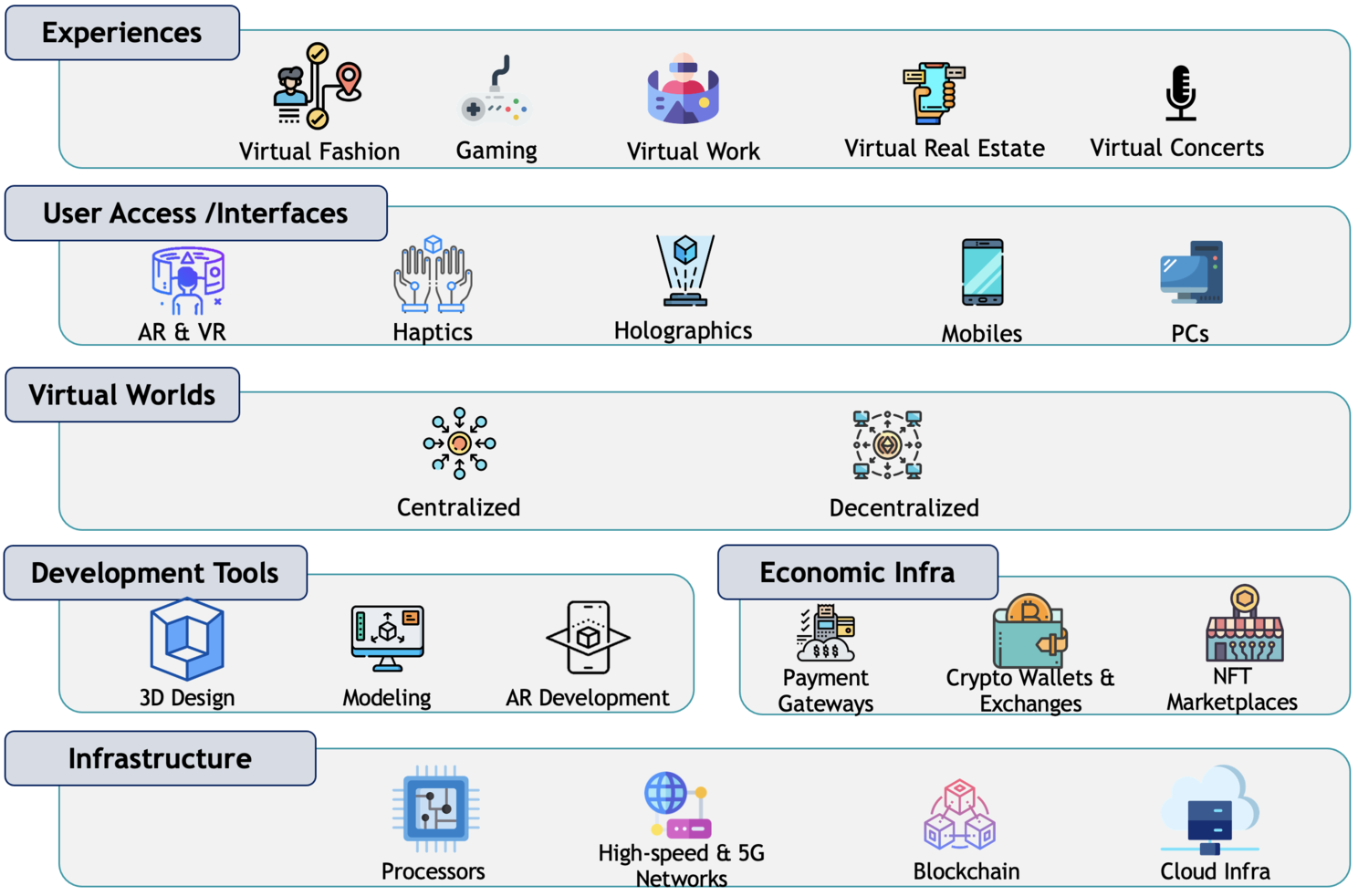Metaverse seems to be the buzzword ever since Facebook announced its name change to Meta to highlight the company's focus on building a Metaverse. This led to an avalanche of interest in Metaverse-related projects with global Google searches for "metaverse" going up by 7200% in 2021. Total investment into Metaverse has already reached $120 billion in the first five months of 2022.
But what is it exactly? While there is a multitude of views on how it should be defined, the most common features are the existence of a virtual world where people can come together and interact with each other in a more immersive way. This virtual world will continue to exist and store information, objects, and assets that the users own even as users continue to log in and out of the world conveniently. Much like the world we currently live in.
What’s All the Buzz About?
The metaverse is a result of both incremental innovation in technological capabilities, as well as an opportunity for redefining the way businesses work, and people engage with the world. Metaverse is the new and much more immersive version of the internet.
Let's take a step back and see how communication and interactions have evolved over time.
From messengers and letters, we moved onto mass communication channels like newspapers in the industrial age. Then came the telephone via which we could talk to people separated by large distances. The 20th century brought the advent of audio-visual mass communication by the way of radio and TV. The result was a reduction in communication time and increased reach and engagement of more human senses to keep us connected. With the introduction of the internet in the late 20th century, the scope of communication changed dramatically.
Now, we had a medium where we could look up information at any time, not constrained by the schedules of radio and TV channels. Moreover, it offered all the previous modes of consuming information - text, audio, and video. It also became a place for conducting business, since the internet never sleeps (except for server maintenance!) and provides a persistent marketplace for goods and services.
The opportunities were endless and we saw the rise of giant companies being built on top of the internet offering everything from shoelaces to movies on demand to connecting with people around the world to high-end AI. The only limitation was that it was all in 2D.

Metaverse promises to change that by making everything we do on the internet more immersive and engaging more of our senses. Importantly, the metaverse seeks to provide people with an opportunity to add their personality to their virtual presence. This has opened a new market for brands that engage with users in the metaverse and provide their goods and services.
While the idea may seem crazy at first but kids in the US already spend about 5 hours every day on social media. Therefore, their virtual identity is a big part of their lives and is quite likely to result in similar offline behaviour, i.e., spending on collectables, virtual accessories for their virtual avatar, and participation in events.
The early forays by leading companies provide an interesting insight into the metaverse's adoption and the opportunity that lies ahead. Giants like Nike, Gucci, Vans, Forever 21, GAP and Balenciaga have established their metaverse presence and seen huge success in reaching out to a new customer segment, that spends time in the gaming metaverse extensively.
How Does it Work?
Now that we understand the reasons behind its existence and the promise it holds, the next questions are: How do we get started? How does it work? What is the technology behind it?
Let's start with the underlying technological layers. At its core, metaverse can be of two types: Web 2.0 based and Web 3.0 based. We've outlined the features for both below.

The fundamental difference between the two is the ownership, governance and payment mechanisms.
Ownership - In a Web 2.0 Metaverse, everything is owned by a central entity. The points, virtual items, real estate or any other asset you buy remain within the platform and in control of the metaverse. For example, a new cool hat for your avatar in Fortnite can only be used within Fortnite. In a nutshell, you don't truly own it, it is the platform you're on that owns it.
On the other hand, Web 3.0 Metaverse is blockchain-based & provides you with the ability to outright own the assets, trade them, sell them or walk away and use them within a different platform, depending on the interoperability. As a user, you have full control over them and all the transactions are recorded on a blockchain to verify your claim. Further, the Web 3.0 Metaverse itself is owned by the users of the governance token collectively.
Governance - All decisions in the Web 2.0 Metaverse are centralized and taken by the platform owners. Changes in Fortnite can only be made by the development team of Fortnite, without requiring any permission from the players.
In the Web 3.0 Metaverse, however, decisions regarding any change or update have to be taken by users who own governance tokens in the metaverse. Changes in Decentraland are voted by users who own wMANA, LAND and Estate tokens. Basically, holders of locked cryptocurrency of Decentraland, digital land and merged parcels of digital land are entitled to make decisions. The idea is that decisions should be taken by people who actually have a stake in the metaverse and will gain or lose due to the changes.
Payment mechanisms - Web 2.0 accepts traditional methods like credit cards, either directly or by converting them to an in-game currency for any financial transactions. Whereas Web 3.0 Metaverse requires cryptocurrencies for all transactions and you need a crypto wallet as well.
Technology layers
Metaverse is the result of advances in technology across a broad spectrum. The core infrastructure has been enabled by the proliferation of the cloud, rapid increase in computing power, high-speed networks and blockchain.
The improvements in computing power and display technology led to the development of sophisticated tools for the creation of 3D objects and worlds that create an immersive environment for the users. The ways in which users can experience virtual environments are also evolving exponentially as the creators make the interactions more intuitive and natural by moving beyond phones and PCs to virtual reality, haptic technologies capturing and imitating user movements and holographic technologies.

The emergence of blockchain led to the development of decentralized transaction systems that allowed reliable peer-to-peer exchanges for the creation of virtual economies in metaverses. However, a blockchain-free metaverse also exists where the users can simply enjoy the experience instead of worrying about decisions being taken by stakeholders whom they don't know.
Ultimately, the way consumers will interact with the metaverse is through experiences, enabled by interfaces like AR/VR, mobiles & haptic suits and it'll all come down to the digital experience an organization is able to deliver.
Mastek's approach is to help organizations define revolutionary metaverse experiences as we take care of all the layers that enable it.
How does Metaverse Open a World of Customer Engagement Opportunities for Businesses?
Currently, the metaverses are mostly built around gaming. This is likely to change in the future as more organizations experiment with different use cases. They can decide to create their own metaverse in the form of a virtual store, office, factory, university, exhibition gallery and other innumerable places. It is entirely dependent on the objective with which the organization views the metaverse.
We believe that the real value lies in public Metaverses that are open for people to join, interact, and immerse themselves by taking part in activities, hanging out with friends, attending virtual concerts & playing games together.
Our primary focus at Mastek is on the public metaverse for retail and consumer experiences through which brands can connect with Gen Z in environments where they already spend a large amount of their time.
Metaverse provides an opportunity on multiple fronts - increasing sales by monetizing virtual goods and experiences, improving brand engagement, establishing a direct connection with the customers and enabling personalization of interactions. Reaching out to the customers on the channels of their preference has always been a concern for brands and metaverse is addressing it effectively.
How Mastek can Help you Get Started on your Journey into Metaverse?
Mastek aims to accelerate businesses’ metaverse journeys by working with them to identify the best opportunities, create a strategy, build metaverse experiences, and drive customer engagement. Mastek continues to explore different metaverse technologies, creators, and frameworks so that our customers can focus on the experience they want to provide their customers.
Let’s join forces to step into the future where embracing virtual reality is the key to success for enterprises.

